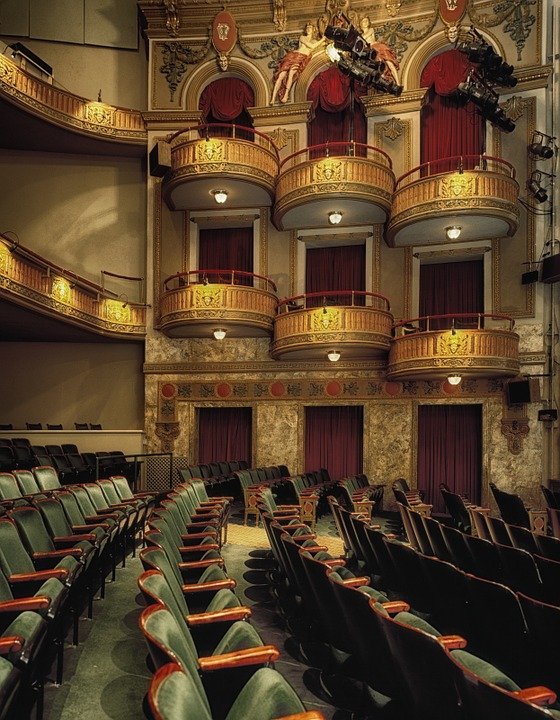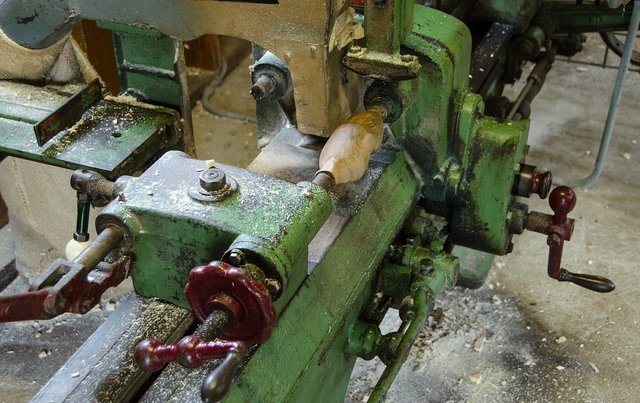A Summary of Bastiat's "That Which Is Seen, and That Which Is Not Seen"
As I stated in the series introduction, Frédéric Bastiat was a French philosopher and economist whose insightful works greatly influenced—and continue to influence—economists. Those who do not heed his influence usually fall victim to the fundamental error he presciently pointed out in 1850.
The core principle is the realization that many apparent economic benefits are derived from a hidden cost, and the unveiling of this hidden cost to reveal the full picture transforms the alleged societal gain into a loss.
Note that some of my comments extend beyond the thesis of the work itself. I can't help it. Bastiat's influence on other writers invariably draws me to bring those ideas back into Bastiat's own work to expand on what he wrote.
Henry Hazlitt wrote a book entitled Economics in One Lesson that is based on Bastiat's work, serving primarily as an expansion and update nearly a century later in 1946. If Bastiat's illustrations fall short, Hazlitt's work is also highly recommended.
Chapter 1, The Broken Window
The essay opens with a parable that illustrates the core concept that will be developed in subsequent chapters.
Suppose a boy breaks the window in a baker's shop. Of course, sympathy will be directed toward the shopkeeper, but invariably someone will suggest that, "It's an ill wind that blows no good, and at least this means the glass shop will earn some money!"
The folly in this outlook is the failure common to every natural or man-made disaster report we see today, namely the visible expenses of rebuilding have a hidden cost as well. In the case of the baker, he must spend money to restore merely the status quo, whereas without the destruction, he would have a window as well as some other good. The rebuilding benefits the glazier at the expense of whatever else he would have preferred to purchase instead of merely replacing what was senselessly destroyed. He could have had a window AND a new pair of shoes, or a window AND a new book. As it is, he must forego some other intended expense to restore the window.
Obviously, if the senselessly optimistic observation were true, wealth could be created by hiring hooligans to break windows everywhere, but that is clearly absurd. Economic growth does not stem from destruction of wealth.
Chapter 2, The Disbanding of Troops
In Bastiat's time, as today, there was a concern that disbanding a portion of the military would create economic chaos as all the workers were brought into the economy seeking work and pay. Bastiat's answer was simple: When a man is in the military, he receives pay that must first be taxed from the general populace. If there is no need for the man to remain in the military, how does it benefit the populace to lose the cost of his wages and receive nothing in return, when instead he could provide gainful service in the economy instead? He is paid either way with wealth from the economy, but when not in the military, he creates wealth in exchange. This unseen loss of a productive worker is the overlooked factor and the lost cost unseen by the casual observer.
Chapter 3, Taxes
Directly related to the preceding argument is the discussion of taxes in general. Whenever government provides a service at taxpayer expense, the service is plainly seen. What is not seen? The alternate use to which the taxpayer would put his funds in the productive economy. Everything the government has, it must either tax first from those who earned it, or it must borrow on the promise of future taxation for repayment.
Now, if the government service is useful and efficiently provided, all is well and good. But how often are politicians honest, frugal, and discerning enough for that? And how much expense is wasted on governmental pomp and spendor?
Later economists more thoroughly developed these arguments from Bastiat's exploration of opportunity costs here, and added the economic calculation problem and public choice economics theory to even more completely demolish the idea that tax-funded projects can be objectively beneficial, but Bastiat's argument on its own is devastating.
Chapter 4, Theatres and Fine Arts
Government support for the arts is still a popular rallying cry, even in our age of crowdfunding, cryptocurrencies, and the world wide web. In Bastiat's time when there was still memory of monarchy adn aristocracy as patrons of the arts, government was considered even more essential. But is it really? Again, when we see the government lavish funding upon the arts, we do not see what people would fund voluntarily.
Of course, in our age, one could point out the cesspool of repetitive swill that is Hollywood and Nashville as a counterargument, except these are hardly proof that the free market has failed. The corporate entertainment machine is deeply intertwined with government, just more subtly than it was in the 19th century.
If you look deeper into the modern world, you will find innumerable examples of innovation as niche markets explore the possibilities. Danielson may not be your cup of tea, but they are also not mass-market schlock. Many of the museums I visited on my trip were funded and operated primarily by local historical societies and volunteers. Youtube is full of experimental film. Amazon has provided a platform for e-book authors like nothing we have ever seen before. And this is what we see despite the political plunder of taxation.
Chapter 5, Public Works
"But what about the ROADS???"
Yet again, the government project is seen, while the true costs are unseen. If the road or bridge is needed, there is little room for complaint, but what about when it is not needed? What if it far exceeds need, or fails to meet it? The common argument is that the government needs to fund these projects to maintain employment.
But what really happens when government employs anyone? Money must be taken from those who would prefer to employ it elsewhere, and to employ other work, which would require workers. But workers and funds alike are claimed first by the State, preventing this productive activity from manifesting at all. The public project is visible. The loss is foolishly ignored. And again, this is still granting the assumption that government does things efficiently and effectively for the "common good."
Chapter 6, Intermediates
There is an assumption in certain philosophies that middlemen are invariably parasitic. Investors, merchants, transportation workers, and the like are alleged to feed off the economy by interfering between producer and consumer.
The cost of paying a merchant or repaying an investor is seen, but what is not seen?
If the merchants did not transport goods from producers to distant consumers, or gather desired goods into a single location, it would obviously be very inconvenient for the consumer to seek out the producers. And since consumers are nearly always producers themselves, this would impact production in a systemic manner.
If the State took over the distribution of goods, where would there be savings? The transportation and warehousing would still need to occur. And how would the politician know how to gather and redistribute?
The merchant has prices as an information network, and can rationally choose the most likely ways to minimize his costs and most effectively profit by delivering to the neediest consumer, organically rationing and preventing shortages. Likewise the investor and speculator seek to anticipate future needs in advance, stabilizing the ebb and flow of the economy even through the greatest chaos.
But for the politician, there must be either ignorant arbitrary dictates, or a complex mess of votes, delegates, petitions, and campaigns after the fact demanding responses long after it is already too late for effective action.The market process is proactive, while the political process is reactive.
Chapter 7, Restrictions
A certain politician has gained prominent office by promising prohibitions, trade restrictions, tariffs, and other protectionist policies. Obviously, old bad ideas do not die easily.
What really happens when a "domestic" producer is protected from competing "foreign" producers? The domestic producer profits, obviously. But how does this really help the economy?
The consumer suffers. These higher prices mean he is artificially restricted from beneficial exchanges. He cannot buy product X in addition to foreign product Y, he can only buy domestic product Y. He is also taxed to enforce the protectionism, adding even more hidden costs he must bear to benefit the protected domestic producer. These costs cannot be ignored by any honest observer.
The producer also suffers. This is not covered in Bastiat's work, but when the producer devotes resources to domestic production when it could more efficiently be produced elsewhere as evidenced by the lower "foreign" price, even his production is destructive of wealth that would be better used for another venture.
Chapter 8, Machinery
This complaint remains popular today, and has been updated as technology advances. Mechanization, electronics, computers, robotics, and now rudimentary AI have all been constantly decried as dooming the worker despite the explosion of wealth we have witnessed worldwide. they are all just tools that multiply human productivity and allow the creation of more wealth for those free to participate in the economy.
Of course, the political class gladly consumes as much of this wealth as possible, and shifts the blame to technology when it does not blame the market itself for the suffering governmental predation inflicts. It is easy to see the job replaced by a machine, but the unseen factor is the new productivity made possible and in need of workers with every advance in industrial development.
Without mechanization, we could have 100% employment in a subsistence economy. With mechanization, we have luxuries that were unimaginable in Bastiat's day with ever-decreasing labor requirements.
Chapter 9, Credit
What are money and credit? Even in the "liberty movement," there is considerable confusion. Here, Bastiat addresses various misconceptions still popular on the "left" and "right."
...When a farmer borrows fifty francs to buy a plough, it is not, in reality, the fifty francs which are lent to him, but the plough: and when a merchant borrows 20,000 francs to purchase a house, it is not the 20,000 francs which he owes, but the house. Money only appears for the sake of facilitating the arrangements between the parties. [...] In point of fact, no one borrows money for the sake of the money itself; money is only the medium by which to obtain possession of productions.
This is a deeper and yet simpler insight than many can seeming comprehend. A lender must make a risk assessment for each loan, and the loan fees are the price of the opportunity cost and risk incurred by the lender.
When the government claims to act as creditor for loans, has anything new been produced? No. Whose wealth is at risk should the creditor default on the government lender? It is the taxpayer's. Meanwhile, the politically-favored benefits at the expense of the individual who has labored to earn good credit. All of the unseen factors here are glossed over or outright denied by the political apologist.
Chapter 10, Algeria
At first glance, this chapter appears to be a relic from colonial times that can be disregarded. However, many countries are still involved in military adventurism around the world, and there are still many of the same excuses made for government protection of corporate interests that were made for colonial interests. As with the other matters, whenever the government extravagantly funds a foreign venture, the costs to taxpayers and lost opportunities at home are willfully ignored. Imperialism and colonialism have morphed, but not vanished entirely.
Chapter 11, Frugality and Luxury
Bastiat: Debunking Keynes before Keynes' dad was a twinkle in his grampa's eye. The "paradox of thrift" is not a thing. Sorry.
Suppose twin brothers each have an equal income. The first spends every penny extravagantly. The second is more frugal, spending 40%, giving 20% as gifts, devoting 20% to charity, and saving 20% for the future.
The first maintains currency flow at the fullest extent. Keynes would be proud. But what of the second?
The initial 40% is spent essentially like the extravagant brother's wealth. Another 40% is also spent, although by proxy, so the Keynesian has little problem here after some contemplation. But what of the 20% that is saved? Is that wealth idle, or worse yet, economically destructive? Not at all. Saved wealth is necessary for investment to occur. If it is saved in a sound bank, it can be used for sound lending. If it is invested in entrepreneurial activity, the economy benefits. The simpleminded fixation on direct spending ignores unseen benefits and beneficiaries.
But suppose it was buried in a box like pirate's treasure. Suppose it never circulated in any way. Remember that money, even when a commodity in and of itself, is valued primarily for its utility in exchange. No produced goods or services are removed from the economy. There is no loss in wealth overall. No real harm occurs.
Chapter 12, Having a Right to Work, Having a Right to Profit
In this last section, Bastiat makes the distinction between offering a voluntary exchange for mutual benefit, and using political coercion to compel involuntary exchanges at the expense of unseen alternative exchanges through the instance of national workshops. Nationalized industry destroys wealth in the same way every other example does by adding coercion to prevent unseen voluntary actions while touting its visible results as though the result was proof of its value, instead of the reality that coercion disproves such value. The modern call for nationalized healthcare is no different from the folly of the national workshops in Bastiat's day.

If you like this post, please comment, follow, and resteem!

If you like this post, please comment, follow, and resteem!



@jacobtothe,
I will definitely give a try for that book. Can we find it at Amazon...
Thanks for sharing this very useful information!
Cheers~